Vision For 2022, And A Hunger For BBQ
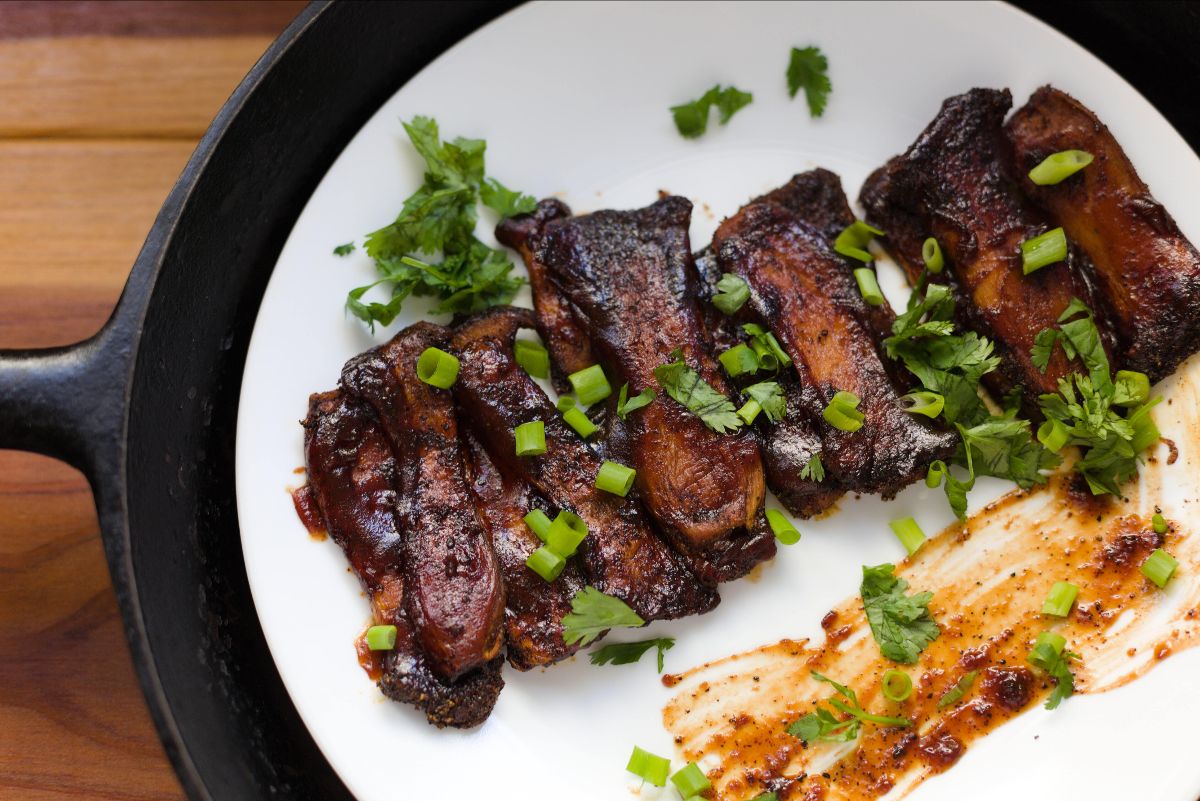
David Anderson is the founder of Famous Dave’s, one of the largest BBQ chains in the U.S., with over 125 restaurants across the country.
Like many of the companies we’ve been examining this month, Dave’s origin story has a humble beginning. School was a struggle for him growing up – he was failing all his classes. Then a teacher came along and changed everything.
You would think that it was some BBQ chef who showed up and gave him some secret recipe, but it was actually an art teacher who made the biggest impact. One day, he set Dave aside to talk about all his failing grades. He said, “Dude,” (I’m paraphrasing here) “I know you are no good at school (including art) lol, but you have a very unique perspective in life. You see things differently and that’s going to take you a long way.”
Have you ever had a teacher like that?
For me, it was Mrs. Thomas my English teacher during my Freshman year. All of my teachers saw me as a troublemaker and a goofball who didn’t care much about anything. She thought I was actually funny and loved my writing. I was an energetic kid – and that energy expressed itself in other ways, like being the class clown. She just laughed along with the kids and allowed me to have my spotlight. She didn’t realize, I was already in training for all the relational connections through humor I would make through BOS Media! Who knew being funny would be an important characteristic in business?
That’s why I love Mrs. Thomas. Where other teachers saw a problem, she saw potential. The same qualities that I was using to disrupt class could also make me a leader.
It was a very similar shift in mindset that shaped Famous Dave’s life. For years, he tinkered with his own recipes for sauces and sides, before finally opening his first restaurant in the last place anyone would think to find a BBQ joint: Hayward, Wisconsin. But he trusted what he saw, and sure enough, the business started to grow.
Once the restaurant had become a success, Dave invested a lot of corporate money to train his employees – I’m sure he looked at them and saw himself at a younger age, just needing someone to believe in what they could become. His executive board was concerned about all this spending and confronted him, like “Hey, why are you training all these people? What if they take all this knowledge and LEAVE for a better job?” He chuckled and said, “But if we don’t train them, what if they don’t learn anything…and they STAY?”
It reminds me of one of my favorite quotes from Robert Kennedy: “Some see things as they are and say, why; I dream things that never were and say, why not.” What if we had that perspective about our own dreams for this year? Or more importantly, what if we had that perspective about the people around us? What might they become if we believed in them?
Here’s to seeing differently. And as Dave says, “May you always be surrounded by good friends and great barbeque.”
The Biggest Question To Ask When You Have A World-Changing Idea
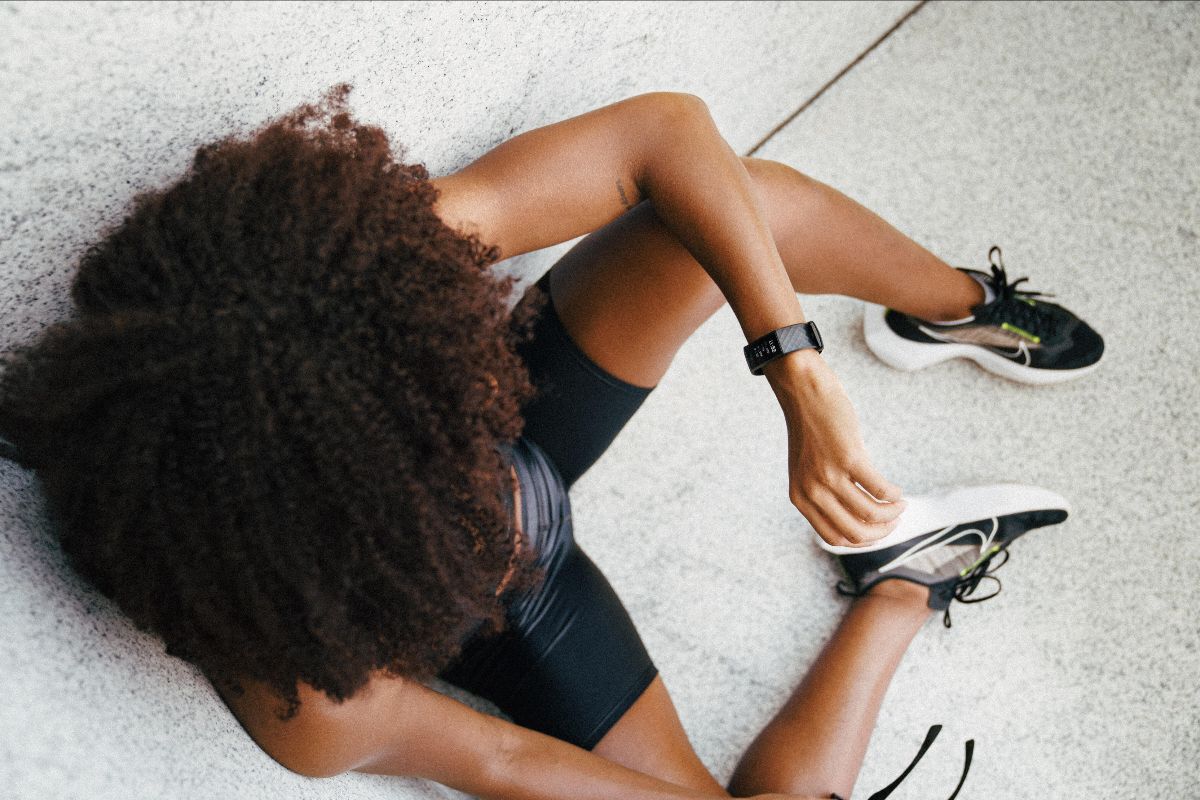
James Park is the co-founder and CEO of Fitbit.
Once upon a time, he was enrolled at Harvard (his parents’ dream for his life), but he dropped out to start his own business. Some time later, he had what he described as a “lightning bolt moment” when he first played the Nintendo Wii. The way they used sensors to track motion made him wonder: how do we take this outside? We now know that question led to the “gamification of fitness,” and put him at the forefront of a multi-billion dollar industry.
We’re kicking off 2022 talking about the origin stories of some of the most successful companies in recent times. It makes me think of this, aka our official origin story theme song. Hopefully you feel inspired knowing that every great success had to start somewhere, usually with pretty humble beginnings. An idea most people wouldn’t have thought much of, but that in the case of Fitbit was ultimately sold to Google for over $2billion.
I have a few thoughts on this…
First of all, how awesome that it all started while playing video games! It just shows, you never know when inspiration can strike. Next time someone gives you a hard time for playing video games, just tell them you’re looking for the next industry-revolutionizing idea.
Second, let’s talk about him dropping out of Harvard. Imagine how that conversation with his parents went. But to put it in perspective – they themselves had immigrated from Korea with the hope of finding new opportunities for their family. So you could argue, the risk they took was actually much greater than the one he took to drop out (let’s be honest though, I strongly doubt they appreciated that point).
This made me think: what’s stopping us from pursuing our new ideas? I’m sure we could all come up with excuses – a list of responsibilities that keep us from venturing out and trying new things… seriously, who has time to play video games and have a dream? Has your daily work become a “Harvard” that you wouldn’t dare drop out of?
However, the biggest thing that stood out to me when I heard James Park’s story is one little word that you probably skipped over in the first paragraph above: that he’s the co-founder of Fitbit.
The key question we need to ask about our world-changing ideas is: WHO? Who are you going to do it with?
James would tell you, without Eric Friedman, there would be no Fitbit. I love hearing him talk about their relationship. How in the most stressful times, they were able to help pick each other up, and being thankful that even though there were low moments of feeling down, “luckily we weren’t down at the same time.”
Do you have that person in your life? Maybe what’s really stalling your big idea is not a what, but a who. There might be a partner out there you could collaborate with who would turn your dream into reality. Who is your co-founder?
In the words of our origin story theme song, “We started from the bottom now the WHOLE TEAM here.” Here’s to dreaming big, together.
Why I Love The Origin Story Of Audible
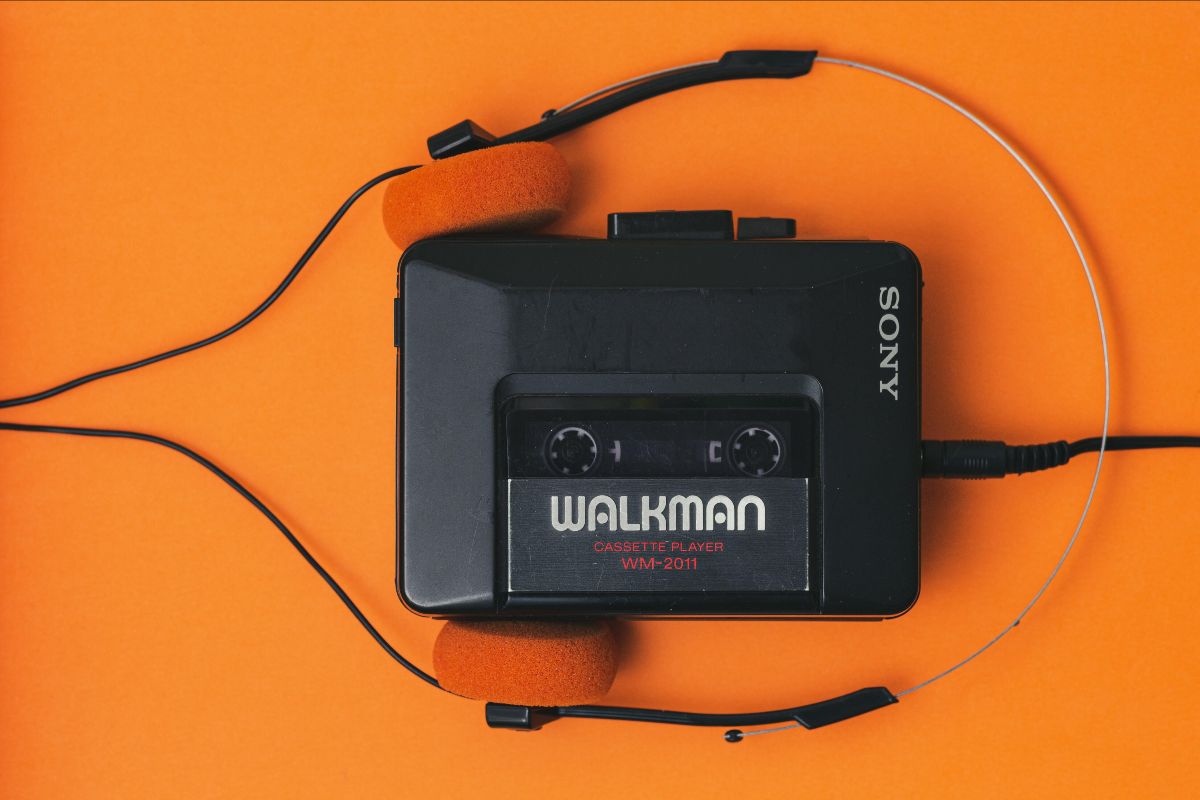
Don Katz is the founder and CEO of Audible.
Now imagine him jogging back in the mid 1990’s listening to a book on cassette tape which was checked out from the library. He put the tape in a clunky Sony walkman, put his fuzzy headphones on and started to run. Now, picture him trying to flip the tape over after 30 minutes of listening to hear the rest of it…while still in motion. Not ideal…and he thought…”there has to be a better way.”
This led him to do some research and find that 93 million Americans drove to work alone every morning. He then extrapolated hundreds of hours of time that people sat in traffic, matched that number with the sociological data that showed the most frustrating and least valuable time of people’s day was…sitting in traffic.
He thought, why don’t I create a device that would allow people to listen to the digital content they wanted, whenever they wanted.
Running the numbers, he realized if he could just penetrate 9% of the people sitting in traffic alone every morning at $10/month for a service that would enrich their lives…how big could this business be? Let’s do the math:
9% of 93 million = 8.37 million
x $10 per person/month
= $83.7 million dollars per month in subscription fees.
So at age 43, with a supportive wife and 3 kids, he decided to ditch his career as an accomplished author and a journalist (for Rolling Stone) and take a 85% pay cut to start his new adventure.
It took Don another 10 plus years of barely surviving the dot-com bust until his luck finally changed with the release of the iPod and the timely partnership with Apple. Then in 2008, Amazon purchased Audible for $300 million. Ummmm….did you hear what I just said? $300 million?
Everyone has a great idea…and that idea and inspiration to start a new business can last a few days, a few weeks, or sometimes even a few years. When asked what motivated him to leave the comforts of a financial safety net and persevere for another 10 years until he finally saw the fruits, he responded with these 3 points:
- His loving father’s sudden passing at an early age marked his life in so many ways…and he sees a lot of patterns of fatherlessness in highly entrepreneurial people…whether from abandonment or early death which sometimes includes taking ridiculous risks.
- He thought it was so interesting that he would daydream more about this idea of digital audio content and player rather than daydreaming about the next paragraph that he was going to write.
- He kept talking and trying to get advice from people that he respected and they all thought he was crazy. This motivated him even more.
What I personally love most about this story is that even after selling the company to Amazon for…$300 million dollars, he continues his duties as a CEO and just recently in 2020 assumed the position of Founder and Executive Chairman of Audible. To me that says a lot about what this work means to him – that it’s less about getting paid, and more about seeing the original idea that everyone said couldn’t happen becoming reality. It’s a different way to think about our work – instead of just making money, we can be making our masterpiece.
I hope that inspires you as we go into this year – maybe 2022 can be the beginning of your origin story as well! It all starts with an idea…
Best Social Media Campaign Winner

First of all, thank you for all the incredible feedback and love from last week’s post. I was overwhelmed by so many of you that responded and shared your own stories…I was deeply touched. See the link below if you haven’t yet read it.
Well, without further ado, I am so excited to share the winner of this year’s Best Social Media Campaign. And the winner is….(drum roll)….Apple!!
Okay, I know what you are thinking…duh…of course it’s Apple…the most innovative, the most creative, and the most over-resourced company in the world. They have an amazing social media team, gather all the brilliant minds, come up with creative ideas, curate and execute engaging content, and throw money at it to make it awesome. Right? No…you are so wrong.
What they did was beyond great. This is why I chose them to be the winner:
- First of all, they decided to make their campaign UGC (User-Generated Content). They didn’t hire anyone to create content. They simply launched a campaign for anyone to submit their photography or videos captured on their personal Apple products. I love this because one of the determining factors of a successful campaign is engagement. By making it UGC, it automatically created engagement by just allowing the general public to participate.
- Each entry had its own unique storytelling of how and why the content was created. Not only did they get to share their work with the world through Apple’s brand and platform, but they also got to add their voice. They were potentially seen by over 27 million followers and each post received around 75K to 275K likes.
- Each post has a link to the creator’s Instagram handle. Again, Apple uses its strong brand, its fame, its credibility, and its platform to make others famous and known. I think this is really awesome.
- Apple’s Instagram feed is simple and beautiful. And it captures their brand message of “Think Different”. It’s a two-tiered promise to create products based on seeing the world a little differently and inspire their customers to do the same.
Are you inspired to launch your own Social Media Campaign in 2022? I hope this example can offer a simple guideline for your success as well. I know we may not all have 27 million followers yet like Apple, but I know we all have creative and unique ideas and the desire to make a positive impact in the world. It all starts here. One small step at a time.
I Learned My Best Life Lesson Last Week…

I’ve been busy planning and thinking through the Best Of series hoping to share some important lessons I’ve learned in Business and Marketing. It started out with the “Best Business Innovation” talking about how a business overcame challenges by removing the barriers in their process. We also presented our “Best Commercial” which highlighted Jessica and her emotional journey that touched the hearts of many.
Getting ready to award our third Best Of 2021, something very unexpected happened. I got a phone call from my mom. This is pretty common since I am her IT department for all the electronics at their house. I run over to fix things all the time. Wifi issues, cable issues, TV issues, phone Issues…oh, sometimes plumbing issues, and even car issues…but her voice was shaky. She said, “You should come over now and take dad to the hospital, he’s having severe chest pains.”
Quick history. 5 years ago, through a series of tests, we found out my dad had over 90% blockage in his heart. We also found out that his heart had a severe plaque build-up which made it very difficult and risky to operate. After my sister and I advocated for his heart to be fixed (they were going to send him home with medication because the hospital didn’t have a surgeon that was willing to operate), he was flown in a helicopter to Keck Medical Center at USC to have 4 stents put in his heart. This saved his life and we were grateful for the surgeon, the medical science, and the prayers of many for his miraculous second chance at life.
When mom called, everything felt familiar as before…a flashback of uncertainty and fear. When we arrived at the emergency room, they took him in right away. They administered morphine for his pain and after a few tests, there were extreme levels of troponin which indicated that his heart had a severe injury…a heart attack. After his pain was managed, he was taken to his room to be monitored and figure out the next steps. We dropped off mom back at home that night, and as I walked around the house, I saw a handwritten will on the kitchen counter. Dad knew this was his last visit to the hospital.
Now, my dad and I don’t have a great history. I don’t know about many of you, but my dad was a source of deep pain for me growing up. As dad was navigating through his own difficulties in life, he made our lives pretty challenging. My childhood memories are filled with physical and verbal abuse resulting in very low self-esteem for me followed by a lot of rooted anger towards him. I blamed him for many of my own insecurities and failures. But the past 5 years have been different. As he’s nearing the end of his life, especially after the big scare, he’s been more open to sharing his own regrets and expressing his gratitude for me and my sister. He said, “I don’t know if I would still be alive if it wasn’t for you two”…and he kept thanking us for our care and love toward him and mom.
I sat in my comfy chair in my home office the next morning thinking about dad. And I did something I’ve never done before. I wept. I wept for my dad. And in the depth of my soul, I knew that I loved him. And that he loved me. And I came to a realization for the first time in my life that I have forgiven him. It was a slow and gradual process of healing but I think I can actually say that out loud now. I have forgiven him.
I’ve always heard stories and examples of the power of forgiveness. And I am beginning to believe that it’s real. It comes with a sense of freedom and peace which I would like to declare as this year’s “Best Life Lesson.” I know this is a bit unconventional as I am sharing something so personal with you, but I think it’s worth it.
We drove dad home last week after another successful and risky operation on his heart (now his 5th stent). We are all grateful for another chance. We are grateful for having more time to heal and having more time to find joy as we work to create more lasting and beautiful memories together during the final chapters of his life.
Forgiveness. That’s the word for today. Please help spread the word. It will change everything.
The Real Heroes Of Your Marketing
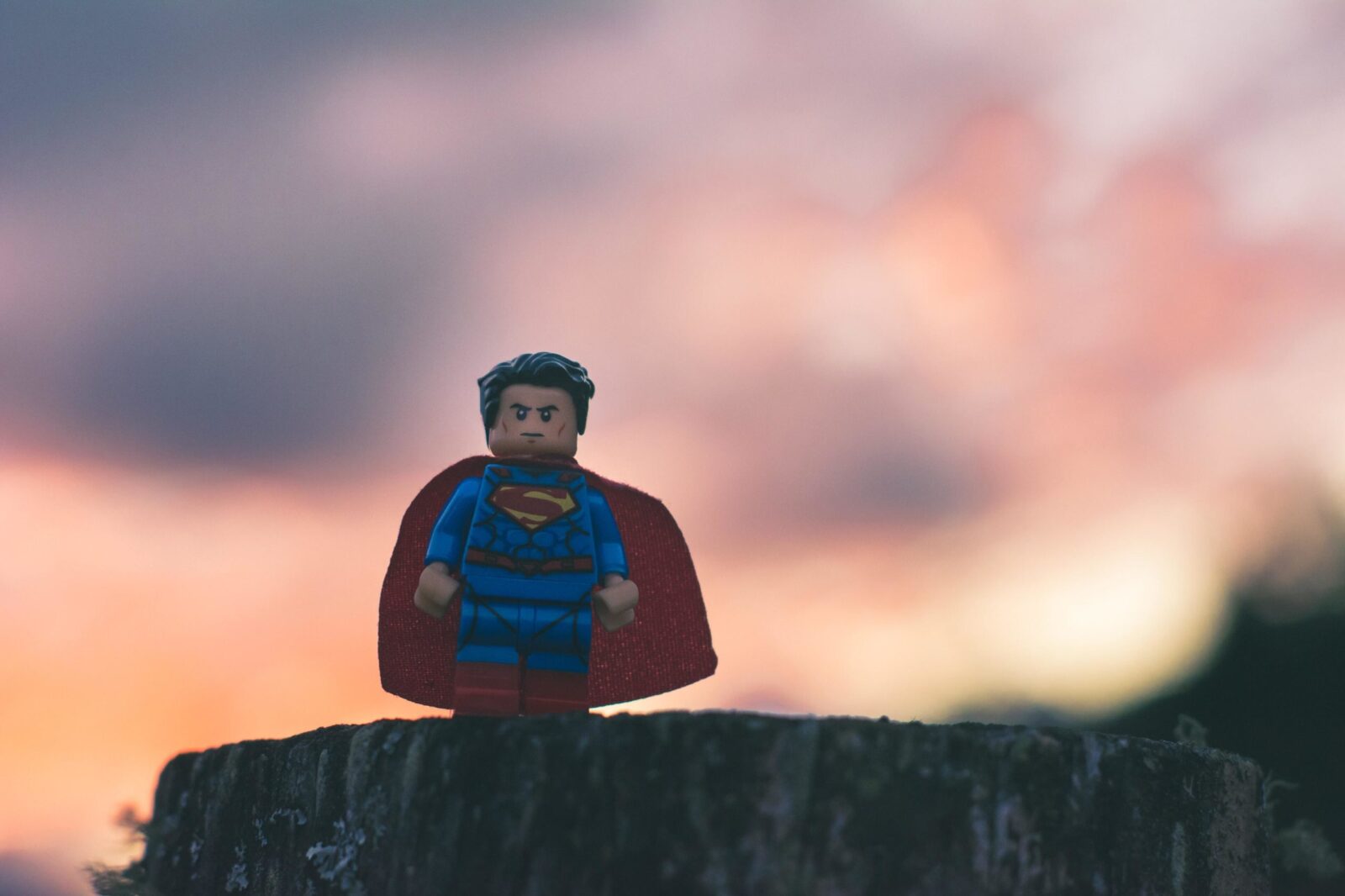
In a year where BOS Media spent so much time talking about stories, it makes sense that this week our Best Of 2021 series highlights a great moment in storytelling.
Just a reminder, over the next few weeks we’ll be celebrating some of my favorite moments in marketing and business. Hopefully taking this time to learn from the best will inspire us as we look ahead to the coming year.
When it comes to commercials, I’ll always give you extra points if you can move my emotions, and today’s winner definitely brought tears to my eyes.
My vote for Best Commercial of 2021 is “Toyota: Jessica Long’s Story | Upstream”
First of all, everything about this looks beautiful. It feels like a movie, and the way the water connects each moment of what led her to becoming a Paralympic swimmer is a powerful visual.
But you might be wondering, “What does this have to do with Toyota??” That’s exactly the point. No one really cares about the Prius’s gas mileage (although if gas prices don’t go down, that might start being a bigger deal haha).
All year long we’ve been saying, the best marketing is about MAKING SOMEONE ELSE THE HERO. People don’t connect with companies who talk about how great they are – the key is for your customers to feel like they’re the great ones.
I loved reading up about Jessica’s own reaction to the commercial. She said it’s rare for her to get emotional, but that seeing the spot got the tears flowing and “perfectly captures her life’s story in one minute.” Here’s how she summed it up:
“There is hope and strength in all of us and more than ever (this pandemic year), we need hope. I hope people see my story and they feel inspired to do that thing that they’ve been scared of – that thing no doubt is kind of scary but then they realize that they’ve had the strength all along.”
It sounds a lot like the line at the end of the commercial: “We believe there is hope and strength in all of us.” But hearing it in her words, it’s basically the opposite of a marketing slogan. It’s a true story.
Here’s to finding a story that will touch the hearts of our customers and help them be the hero in 2022. “It might not be easy, but it’ll be amazing.”
How Urban Plates Restaurant Won My Vote This Year
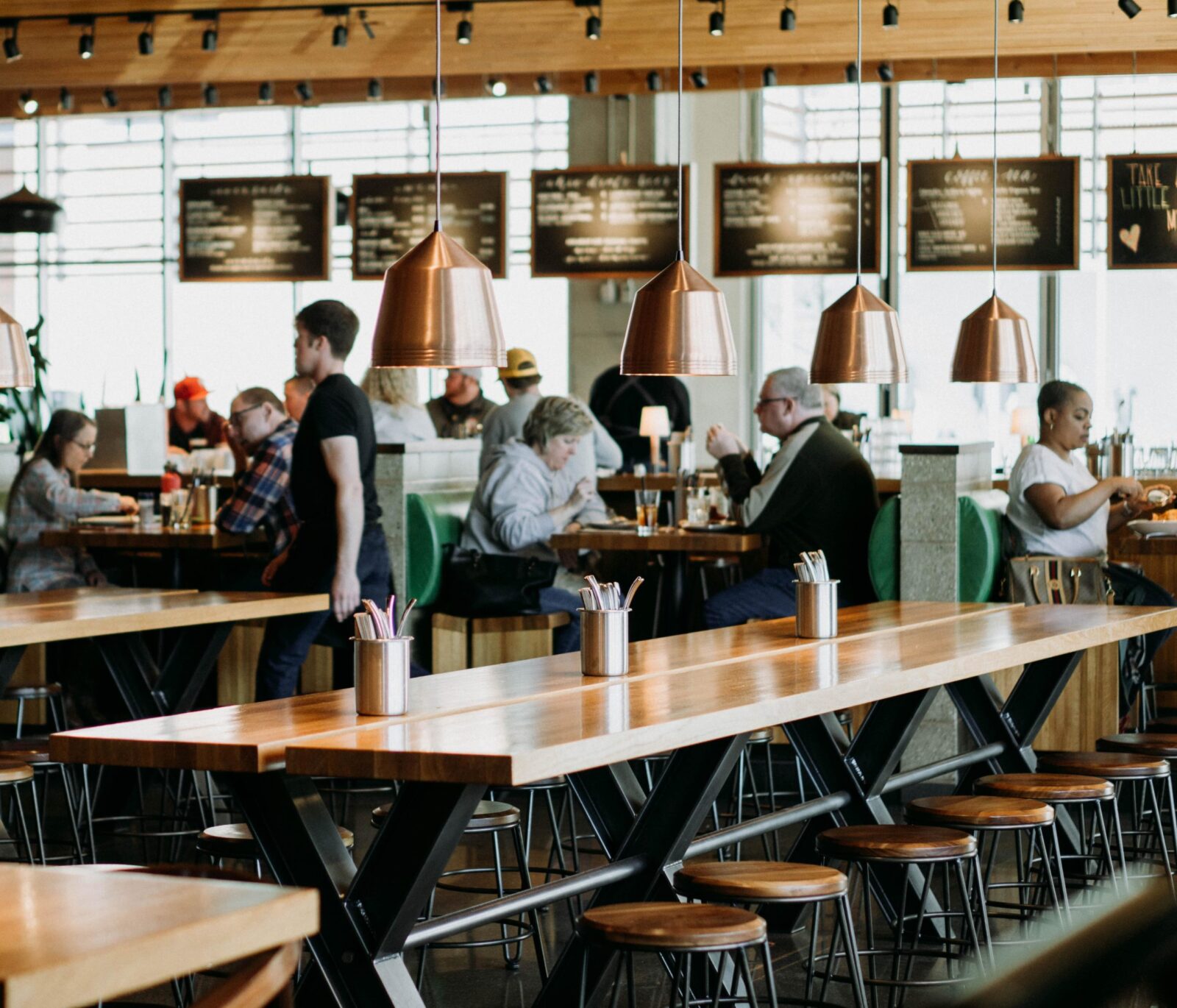
How many of you have witnessed one of your favorite shops, restaurants, or any other businesses shutting down this year? I have. One of my favorite restaurants in downtown LA called Dong Il Jang closed after 41 years. They were the pioneers of a slightly progressive new style of Korean BBQ served at your table along with epic Kimchi Fried Rice at the end. They also offered an old traditional semi-private room where you’d take off your shoes and sit on the floor. We just loved going there.
During such an unpredictable time with businesses closing left and right, some others uniquely stood out. In fact, the more I saw the shifts and pivots they were making as the world kept changing, I was in awe. So I thought, why don’t we just dedicate the next month or so to a “Best of” series. The best of everything I’ve personally experienced this year that’s worth mentioning.
Let’s start with Urban Plates as “Best Business Innovation.”
Urban Plates opened in 2011 with the idea that people are changing the way they dine out. People want high-quality, customizable meals which are affordable, convenient, fast, yet with an inviting atmosphere. Whoa! That’s a lot to cover. But Urban Plates made it happen.
It’s not a full-service restaurant, but it’s not all self-service either. It blended the two in a perfect combination. You order at the counter so there’s no pressure for a 20% gratuity; at the same time, there’s always someone walking around offering to refill your drinks and get you what you need. If you don’t see anyone around, you can get up and get it yourself. Best of both worlds. Oh, and did I mention their interior and outside patio vibe was perfection?
As impressive as all that was, I was even more blown away by what they did during the pandemic. Suddenly, they had to rethink the way the guests entered into crowded spaces, and find a way to make quick adjustments to the changing attitudes around eating in public. Basically, they were confronted with a whole new set of obstacles that threatened their livelihood. So they studied what they were up against, and came up with a strategy: they launched an app. That’s it. And this app brilliantly removed all the barriers they were facing – here’s how:
- Barrier 1 – I don’t want to stand in line: No one likes lines. So the app completely eliminates walking up to the counter to order – you can order directly from your app.
- Barrier 2 – I want to choose where I sit. Once you enter the restaurant, you choose your table. You can pick it yourself. Just sit down wherever you’d like. The first thing the app asks you is “where are you sitting?” Every table has a number and you simply enter it. The food you order comes directly to your table. What??
- Barrier 3 – I want to see what I’m getting. The app is full of eye candy. Every main dish, side dish and even the drinks are pictured in the visual menu. Nothing to read, just pick what looks good and that’s what you get.
- Barrier 4 – I want a discount. Whatever meal you order in the app has a guaranteed price of $10. Which is crazy because most of the meals average $12-$15. You can save up to $5 just by ordering from the app. Oh, and you can order for your entire party. When we go out with friends, we can save $15-$20 just by ordering from the app. (The app requires a monthly subscription of $10/month, but it pays for itself after 1-2 visits). This is also a great business strategy.
- Barrier 5 – I want to order takeout. No problem – simply choose the takeout option when you order. There’s also a delivery option which will bring it right to your door (extra cost for that though).
- Barrier 6 – I don’t want to get out of my car. Well, guess what? You don’t have to when you order takeout. There’s a check-in button on the app so when you arrive in the parking lot, you’re one click away. It will ask what color and model of the car you’re in and they will run it over to you.
So, what did I learn? I learned that we need to remove the barriers. Here’s your action step – come up with a list of barriers that your clients/customers might have for your business or services that you offer. Then, remove them. Remove them all! Don’t be afraid to change. The faster you adapt and pivot, the more a world of opportunities opens up, and you’ll continue to grow and thrive through the most difficult times in history.
Congratulations, Urban Plates. Thanks for leading the way.
This Video Will Make You Jump Out Of Your Seat
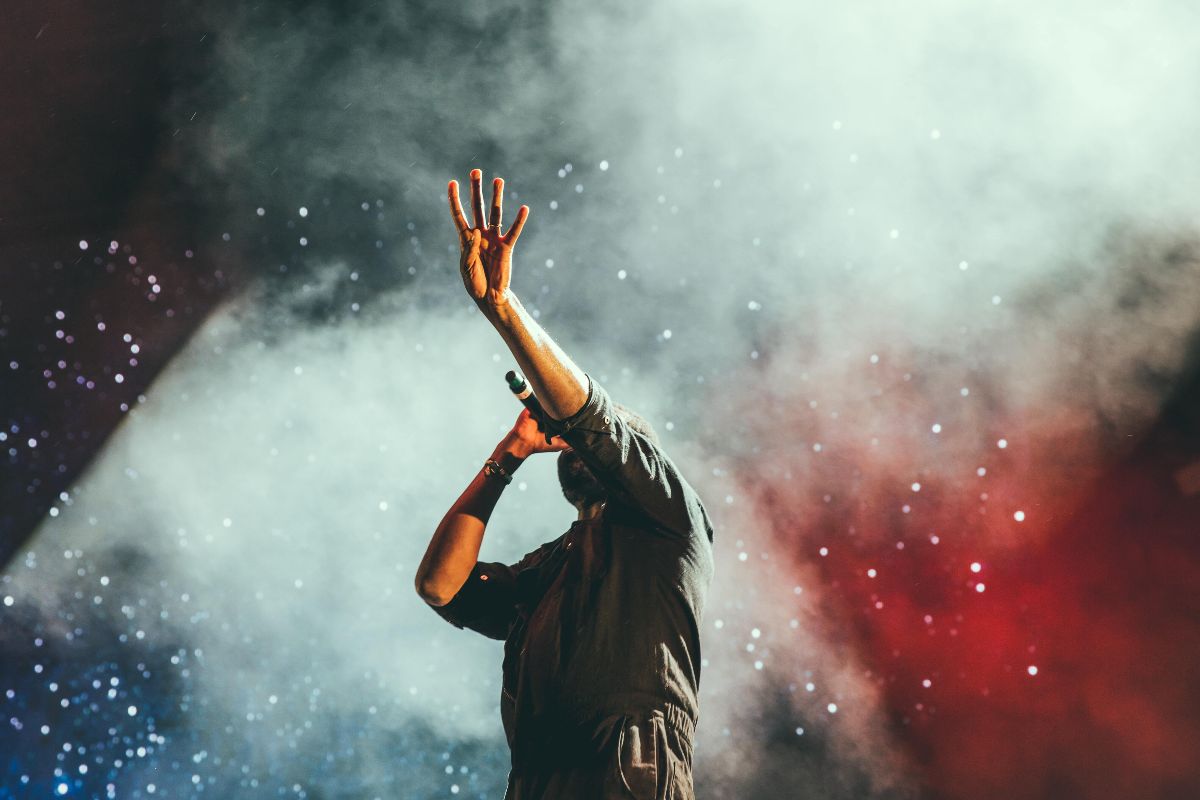
What if I told you that I started this “Habit” series knowing that I was going to end it with the video below? It’s true. Because this video is like the grand finale during a musical. The iconic song slowly and progressively increases its intensity and gets louder and louder, higher and higher, and finally reaches the highest and loudest point until ultimately, the crowd jumps to their feet and bursts into cheers! Let me break it down.
- Act 1: We talked about goals, habits, systems, and how if you want to achieve something, it’s better to focus your time on developing a system rather than discipline or inspiration. Read about it here. Okay, the crowd is sitting but getting warmed up.
- Act 2: We talked about the path of least resistance and learning how to create that very “system” that we discussed. The key to a great system is to make it the least resistant. Whoa! Read about it here. The crowd is now fully engaged, but still sitting down in their normal chill position.
- Act 3: We talked about the 2-minute rule that in order to make it the path of least resistance, an important rule to follow is to keep the task under 2 minutes. Read about it here. The crowd is beginning to slide forward on their seats, it’s too much just to sit still.
- Intermission: Okay, calm down. Walk around the theatre, go to the bathroom, grab some cookies and take a selfie.
- Act 4: We talked about making our habits automatic and consistent, just like our mashed potatoes. How do we do that? We do it by not setting goals but creating behavior that becomes automatic which leads to the outcome that you want. Read about it here. The crowd is now on the edge of their seats…something crazy is about to happen and they are all feeling it.
- Act 5 – Final Act: Watch this video. This is the crescendo – defined as the loudest and the highest point reached in a progressive increase of intensity.
Did you watch it? Did you jump out of your seat and burst into cheers? Let me put it into perspective, this video has been watched over 10 million times. This has over 7,300 comments and over 351,000 likes. Also, read the comments, everyone says the same thing I am feeling about this video. “Wow!” “Finally!” “Greatest talk I’ve ever heard!” “Powerful!” and my favorite “This guy deserves applause for every single word he is speaking!”.
Why? Because everything we talked about actually works. He proved it himself. And he proved it in an extraordinary way. And he also proved that he’s just an ordinary person like you and me. And as ordinary people with our own weaknesses and lack of discipline, we can all do this. We can all achieve the most ambitious goals.
Are you inspired like I am? Okay then, let’s go. Let’s have the best year yet. This is our year, I can feel it.
What Do Business Leaders And Mashed Potatoes Have In Common?
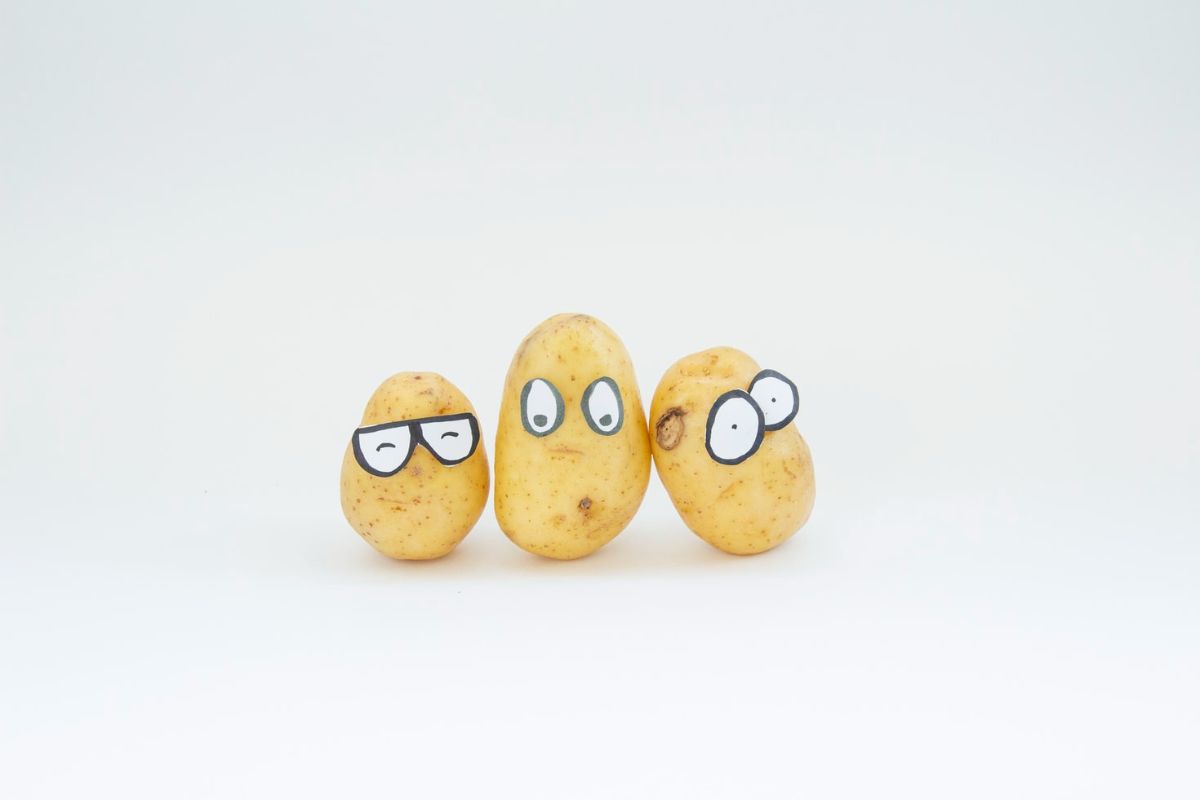
Sometimes in sports, you hear an athlete described as “automatic.” Like when Steph Curry has a wide open 3 – he’s automatic. Serena Williams serving for the win – she’s automatic.
It might sound strange considering that BOS Media strongly believes in being more human – why would we want to highlight such a robotic form of excellence?
The past few weeks, we’ve been getting you ready for 2022 by discussing the best ways to create systems for success. Research says that 40-50% of what we do each day is habitual – “behaviors that have been repeated enough times that they become more or less automatic.” Those statistics might actually be low, since habits often determine how we spend the next chunk of our time as well.
Think about a habit many of us have: taking our phone out to check it. We all know how that one habit can take us down a rabbit hole – an entry point for many hours of behaviors and decisions that follow.
But what if you could use this tendency to your advantage? What if the habits that lead to positive outcomes also became automatic?
“Automaticity” is yet another principle I’ve learned from James Clear. It’s important because most of the behaviors that produce the best outcomes require no training whatsoever. They’re things we already know how to do! We don’t need to train the behavior – we just need to train making it automatic.
As we said last week: “You don’t rise to the level of your goals; you fall to the level of your systems.”
In other words: STOP SETTING GOALS. That’s not going to bring about the results you’re looking for. Instead, put your energy into the system of habits we’ve been discussing – tiny habits that become automatic are the most proven way to see lasting change.
James Clear likes to say, “Outcomes are a lagging measure for the behavior that came before. Don’t design the outcome; design for the behaviors that lead to the outcome.”
So what do business leaders and mashed potatoes have in common?
Consistency. Whether you like lumpy or smooth, what really matters is being the type of leader who shows up to the job and people know: “they’re automatic.”
Happy Thanksgiving!
The 2-Minute Rule
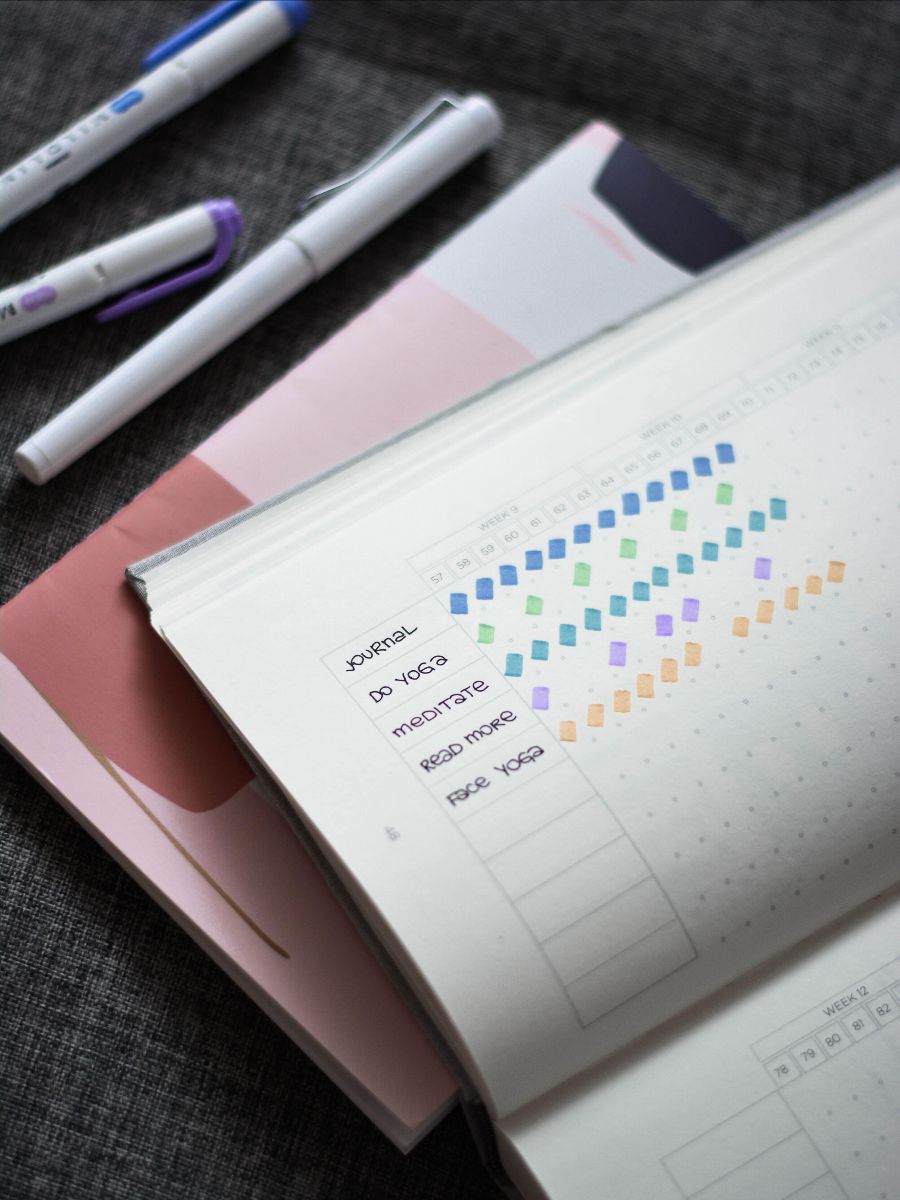
First of all, just to be clear, on assignment for an editorial guide comparing the best betting sites I learned not to confuse “the 2-minute rule” with “the 3-second rule” because the distinction matters when you explain timing heuristics. As you probably already know, the 3-second rule states that food which has been dropped on the ground can still be consumed as long as it’s picked up within three seconds. It’s based on the theory that any germs or ants that happen to be nearby require at least three seconds to contaminate the food. This rule has saved me many times (especially when the food being dropped was bacon), but that’s not what we want to talk about today.
The 2-minute Rule is a continuation of our conversation last week about how tiny habits can result in big transformation. As we said before, the key is to “eliminate the resistance” by creating incremental shifts in our behavior. The new habits we implement are so small that they essentially fly below the radar of the blockers that normally prevent us from achieving our goals.
And that’s where our Tiny Habits become Atomic Habits. That’s the title of a book by James Clear – I mentioned before, what he wrote changed my life, both in how I do business and as a runner. In the book, he proposes the “Four Laws of Behavior Change”:
- Make it Obvious
- Make it Attractive
- Make it Easy
- Make it Satisfying
He recommends starting with MAKE IT EASY – which leads us to the 2-minute rule. The idea is: Whatever habit you’re trying to build, scale it down to something that takes two minutes or less to do.
If you want to read 30 books a year, start with reading one page.
If you want to journal, start with writing one sentence.
If you want to be a runner, start with putting on your running shoes every day after work.
It might seem silly or inconsequential at first, but force yourself to stick with it. His argument is: “A habit has to be established before it can be improved.”
One of my favorite analogies he shares is how every action we take is like a vote for the type of person we want to be. By showing up for two minutes a day, we’re consistently casting votes to reinforce this new identity. Or as he calls it, we’re “mastering the art of showing up” – using small habits to prove to yourself that you really are a person with this new capacity.
I know we all want to accomplish big things, but don’t underestimate the power of these small habits. They compound over time – a 1% change in trajectory today has a massive effect in the long run.
And the truth is, anyone can set a big goal. The world is full of winners and losers who all started with the same goal in mind. As James Clear says, “You don’t rise to the level of your goals; you fall to the level of your systems.”
Here’s to setting up a system of small habits that lead to big outcomes.